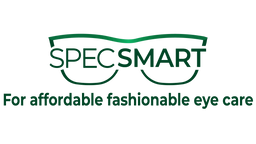By Dr. Itua Enakhe (OD)
Tonometry is a non-invasive procedure that measures the fluid pressure inside the eye—called intraocular pressure (IOP). This pressure determines eye health and can signal issues like glaucoma, a condition where increased IOP damages the optic nerve, risking permanent vision loss.
Why Is Tonometry Important?
-
Early Glaucoma Detection: Glaucoma rarely shows symptoms until vision loss begins. Tonometry identifies high eye pressure—an early warning sign.
-
Prevent Permanent Damage: Early intervention with medications, laser, or surgery is more effective.
-
Routine Care: Regular checks help optometrists spot risks for vision loss, especially for those over 40, with family history, or additional health concerns.
How Does Tonometry Work?
-
Non-contact Tonometry (Air Puff Test):
-
Quick, painless air puff flattens cornea, measures IOP.
-
-
Goldmann Applanation Tonometry:
-
Highest accuracy; a numbed probe gently touches the cornea.
-
-
Maklakov Tonometry:
-
Weighted plunger after numbing drops, also very reliable.
Optometrists at SpecSMART Eye Clinic Ikeja choose the best method based on your needs and medical history.
-
How Tonometry Detects Glaucoma
-
Measures Pressure: High intraocular pressure signals risk.
-
Combined with Other Tests: Optometrists use visual field and optic nerve health checks for a full diagnosis.
-
Ongoing Monitoring: Elevated IOP means more frequent exams and possible specialist referral.
Why Regular Eye Tests Matter
-
Early Detection Is Key: Because glaucoma has no early symptoms, eye tests should be scheduled regularly, especially if you’re over 40 or have risk factors (family history, diabetes, hypertension).
-
Broad Care: SpecSMART Eye Clinic Ikeja offers comprehensive exams, addressing all aspects of eye health—not just glaucoma.
When Should You Schedule Tonometry?
-
Over 40 years old.
-
Family history of glaucoma.
-
Previously diagnosed high eye pressure.
-
Diabetes, hypertension, past eye injuries.
FAQs
What is the difference between an optometrist and an optician?
-
Optometrists perform eye exams and diagnose conditions; opticians fit and dispense glasses and lenses.
How often should I get a tonometry test?
-
At least every 2 years, sooner if you have risk factors (see above).
Can glaucoma be prevented?
-
While not preventable, early detection via tonometry and regular optometrist visits can manage and slow progression.
What are the signs of high intraocular pressure?
-
Usually none—regular testing is the only way to know.
Do I need a referral for an eye exam at SpecSMART Eye Clinic Ikeja?
-
No referral needed; book appointments online or via phone.
📍Contact SpecSMART Eye Clinic Ikeja
Ile- Oja Mall, Opebi Link Road, Ikeja.
📞 0703 839 1197


